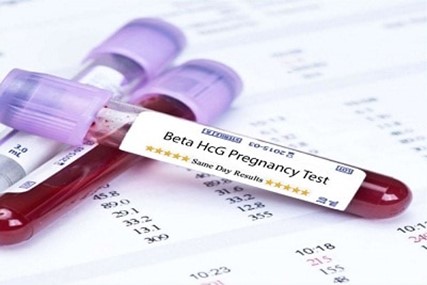In the past few years, more and more women have been seeking fertility treatments due to diverse motives: the wish of becoming a mother getting delayed, sperm quality problems, single mothers or new family models.
Disappointments can accompany women and their partners while seeking pregnancy through assisted reproduction treatments like insemination, in vitro fertilisation or using donor eggs. In such cases, women must stop taking the medicines prescribed in the therapy plan by the doctor. There is a possibility to have a new consultation with the doctor to analyse the necessity for additional tests and a new treatment can be organised depending on the results.
But what happens when the test for BhCG in blood 14 days after the insemination or embryo transfer turns out positive?
This quantitative test of human chorionic gonadotropin (hCG) measures the level of this hormone in blood. The hCG is a hormone produced in the body during pregnancy.
A new chapter with hundreds of questions begins.
Receiving a positive pregnancy test is a joyful moment sometimes followed by disbelief, fear or even uncertainty thinking “what should I do now?”.
The patients must always send us the result to assess and register it. Occasionally, the test must be repeated to see if the evolution of BhCG is correct. We repeat to you the importance of continuing the therapy that you began a few weeks ago and suggest you get an appointment with a gynaecologist in your country 10-14 days after the test is done. The first control ultrasound is critical to check whether the pregnancy develops correctly in the uterine cavity. This visit is thrilling because you may see the yolk sac and hear the heartbeat. The ultrasound scan corresponds to approximately 5-6 weeks of gestation.
Your doctor will ask you all details about your treatment and therapy during the first consultation. Our advice is to follow the therapy until the 10th week of gestation. Nonetheless, your doctor may advise you to continue the therapy longer.
After observing that the sac is in the uterus and the size of the embryo corresponds with the gestation weeks, you will undergo many analyses throughout your pregnancy.
Usually, in normal non-high-risk pregnancies, the analyses, visits to gynaecologists and obstetric ultrasound scans are carried out in each trimester.
Cristina Mateo Sánchez
Nurse
Foto:https://urecentrogutenberg.es/wp-content/uploads/2017/11/beta_hcg_pregnancy_test.jpg
#positivebhcg
#assistedreproduction
#fertilitytreatment
#eggdonation
#IVF
#ICSI
#ivficsi
#artificialinsemination
#manzaneraclinic
#oocytedonation
#spermdonation
#gametedonation

